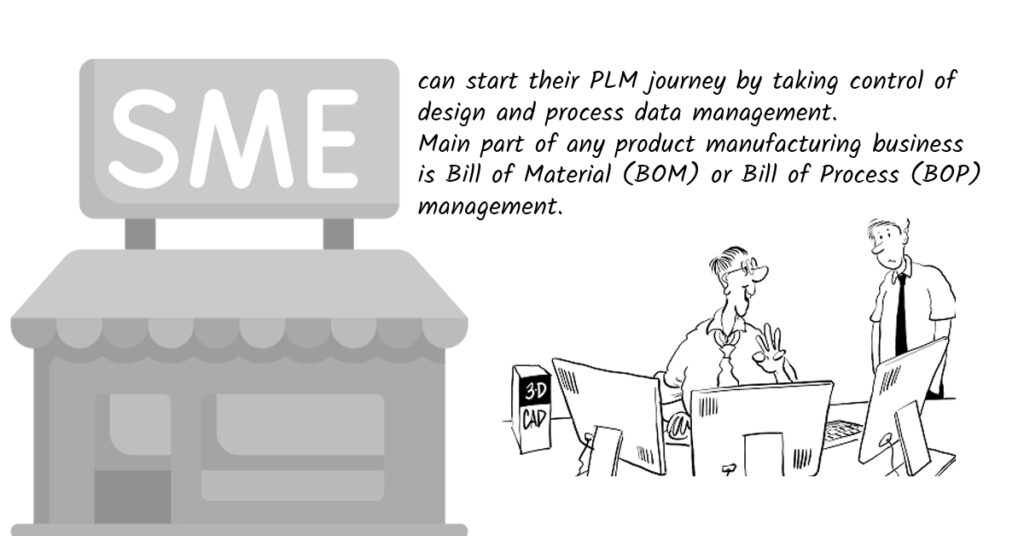Rolling out PLM functions for Small to Medium manufacturers (SME’s) becomes the top most priority to bring brand-new competitive products to market faster in this smart connected globe. Product lifecycle management (PLM) consists of the core product data management (PDM) and also multi-CAD integration, which product manufacturers need to manage extensively spread workforces. SME market is growing fast throughout several manufacturing industries.

Among the main part of any product manufacturing business is Bill of Material (BOM) or Bill of Process (BOP) management. An imprecise BOM can create lost weeks in a routine and also lead to wasted manufacturing runs. Choosing a PLM solution to automate, improve as well manage BOM management and make sure BOMs are always accurate has a tendency to be a higher top priority.
A lot of SMEs are product-centric, can start their PLM journey by taking control of design and process data management. Have PLM for new product development by assisting the product design teams better locate, share, and also reuse product information, synchronizing and automating processes like design release along with engineering and manufacturing change process. Put in the time to check out the options and also relocate from the hand-operated procedures of excel or spreadsheet as well as non-automated systems that create disturbance in this day of rapid change.
Check out OpenBOM PLM functions as (G2 Reviews)
Understanding of OpenBOM PLM systems, will help to enhance the NPD/NPI process with in the enterprise. OpenBOM is a SaaS cloud-based PLM digital network platform that manages product data and connects manufacturers and supply chain networks. OpenBOM manages Parts (Items), Item Masters (Catalogs), Bill of Materials, Vendors, Planning, and Purchase Orders. OpenBOM connects the various silos of data in your organization (CAD, Bills of Material, POs, ERP/PLM, and more) in a single manageable connected process.
Existing fad is moving in the direction of cloud-based PLM offering SME’s even more choices to set up options to their particular organization demands. Among the major reason is typical PLM systems architected for large ventures and OEM should be personalized to fulfill the needs of the SME, which is testing as it entails pricey time-consuming solutions and large group for maintenance, which are decreased with cloud-based PLM.
Final Thoughts:
Expense of rolling of PLM functions which consists of updates along with enhancements in addition to subscription-based pricing versions makes PLM services budget friendly, positive and far more manageable for SMEs. The new normal has relocated SMEs to proceed with SaaS-based cloud PLM as necessary for protected global around the clock collaborative remote work.

